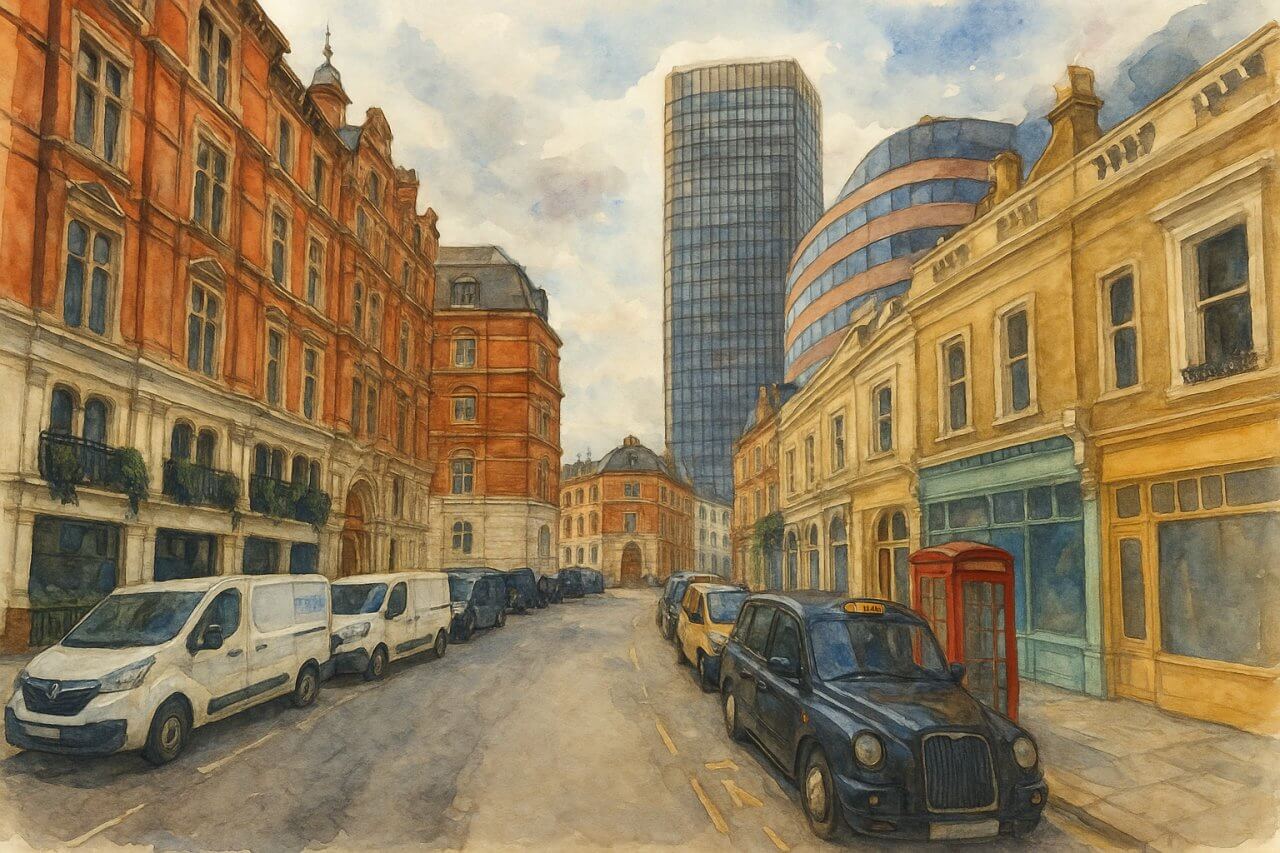
Liverpool Street, London
Liverpool Street is a short but historically and economically important road in the City of London, running east-west between Old Broad Street to the west and Bishopsgate to the east. This street lies in the heart of London's financial district, surrounded by towering office blocks, modern developments, and major transportation links. It forms part of a wider area often referred to as the Liverpool Street Quarter, which includes the bustling Liverpool Street Station and Broadgate complex.
How Long is Liverpool Street?
The street itself is approximately 300 metres (0.19 miles) in length. Despite its short span, it plays a pivotal role in connecting two of the City’s most significant streets—Old Broad Street and Bishopsgate—and offers access to one of the busiest railway and Underground stations in the UK.
History of Liverpool Street
Liverpool Street was first laid out in the mid-19th century as part of wider redevelopment plans tied to the expansion of the railway network into the City of London. Its creation is closely linked with the construction of Liverpool Street Station, which opened in 1874 as a new terminus for the Great Eastern Railway. The road was built to provide direct access to the station and to ease congestion in the area.
Prior to this development, the area was made up of a network of smaller lanes and alleys, including a now-vanished road called Bethlehem Hospital Road, which referenced the nearby site of the old Bedlam asylum. The formation of Liverpool Street modernised the area and integrated it more fully into London’s expanding transport infrastructure.
How Did Liverpool Street Get Its Name?
The street is named after Lord Liverpool, who served as British Prime Minister from 1812 to 1827. The naming was part of a trend in the 19th century to honour prominent political figures through street names in new developments. The adjacent station also bears his name, reinforcing the connection between transportation and governance in the Victorian era.
The Character of Liverpool Street
Today, Liverpool Street has a dynamic, corporate character. It is defined by modern office buildings, international bank headquarters, and a constant flow of commuters. It serves as a key entry point into the City for workers arriving from East London and the counties of Essex and Hertfordshire via rail.
Despite its corporate feel, the street is also known for its proximity to more atmospheric and historic corners of the City, such as Old Spitalfields Market, Bishopsgate Institute, and Devonshire Square. Its vibrancy and accessibility make it a useful base for businesses, and the presence of hotels and high-end eateries means tourists are never far away.
Real Estate and Property Prices
As of May 2025, property prices on and near Liverpool Street remain among the highest in London. Prime commercial properties here average around £1,700 per square foot (£18,300 per sq metre), reflecting the area's prestige and proximity to financial institutions.
For residential properties in nearby developments—such as those above Broadgate or adjacent luxury flats—prices average between £1,300 and £1,600 per square foot (£14,000–£17,200 per sq metre). Typical flats range from 500 sq ft (46 sq m) studios to 1,500 sq ft (139 sq m) penthouses. These figures place the area well above London's average residential price, which sits closer to £740 per square foot (£8,000 per sq metre).
Transport and Underground Access
Liverpool Street Station is one of London’s major rail terminals, located directly adjacent to the street itself. It offers direct train services to East Anglia, Essex, and Stansted Airport.
The Liverpool Street Underground station is a vital interchange served by four lines:
In addition, the Elizabeth Line (Crossrail) now stops at Liverpool Street, offering fast connections to the West End, Heathrow Airport, and Reading.
Fun Facts about Liverpool Street
One quirky feature of the area is the forgotten burial ground uncovered during Crossrail excavations. In 2015, archaeologists discovered over 3,000 skeletons beneath Liverpool Street Station, believed to be from the Bethlem Royal Hospital and victims of the Great Plague. The remains have since been studied and respectfully reinterred.
Additionally, Harry Potter fans may recall that parts of the station were used in filming scenes for the franchise, most notably as a stand-in location for some of the shots involving King’s Cross and the Hogwarts Express.
Quick Facts
- Location: City of London
- Connects: Old Broad Street (west) to Bishopsgate (east)
- Length: Approx. 300 metres (0.19 miles)
- Year Built: Mid-19th century, linked to railway expansion
- Named After: Lord Liverpool, Prime Minister (1812–1827)
- Character: Corporate, fast-paced, with historic and modern landmarks nearby
- Property Prices (May 2025): Commercial ~£1,700/sq ft (£18,300/sq m), Residential £1,300–£1,600/sq ft (£14,000–£17,200/sq m)
- Nearby Tube Station: Liverpool Street (Central, Circle, Hammersmith & City, Metropolitan, Elizabeth Line)
- Fun Fact: Site of a 16th–17th century burial ground rediscovered during Crossrail works

Map of Liverpool Street, London

Painting of Liverpool Street, London (View image in full size)